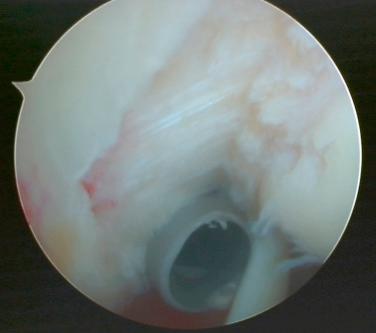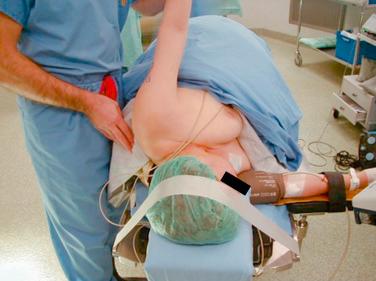Physical Address
304 North Cardinal St.
Dorchester Center, MA 02124
Partial-thickness rotator cuff tears (PASTA) are reported to be a common disorder of the shoulder. Improvements in imaging such as magnetic resonance imaging (MRI) and arthroscopic procedures have allowed more accurate characterization of partial rotator cuff tears. In recent years, arthroscopic transtendon or takedown repairs have been reported with good results and without statistically significant differences between techniques related to force or patient satisfaction.
Arthroscopy is performed with the patient in the lateral decubitus or beach chair position, utilizing locoregional anesthesia, and using three portals (anterior, posterior, lateral).
Assessment of the uncovered footprint with the probe.
Transtendon approach versus takedown and repair.
One triple-loaded metal anchor.
<50 years of age
Male active in sport/athletics
Subtle onset of shoulder pain after overhead work/sport
Pain during the night
Usually patients maintain full active range of motion (ROM); although there are differing degrees of stiffness
Jobe test negative but painful
Palm up test sometimes positive
O’Brien test sometimes positive
Belly press negative
Patte test negative
MRI is useful to confirm and assess partial supraspinatus tears and to exclude full-thickness tears.
Radiographs should be obtained to exclude calcific tendonitis. Radiograph views should include anteroposterior, scapular Y, and axillary.
Step 1: Rest
Step 2: Nonsteroidal anti-inflammatory drugs (NSAIDs)
Step 3: Rehabilitation protocol for at least 3 months, with the goal of recovery of full active ROM and strengthening of scapulothoracic muscles
Step 4: Arthroscopy procedure: takedown and repair or transtendon repair
Partial articular supraspinatus tendon avulsion ( Fig. 18.1 )


Uncovered footprint
Synovitis
Bursitis
The first step of treatment is usually conservative, but in demanding patients, surgery could be an option even as a first step.
Surgery is indicated in cases of failure of rehabilitation treatment.
Lateral decubitus position
20–30 degrees of posterior tilt
Arm in 45 degrees of abduction
Arm in 10 degrees of forward flection
It may be necessary to increase traction, and sometimes the abduction must be less than 45 degrees in case of high acromion index.
Wrong position (not enough posterior tilt) could make it difficult or impossible to view the anterior part of the footprint.
Standard arthroscopic instrumentation and traction system
5.5-mm plastic cannula
One metallic anchor, 5.5 mm (double- or triple-loaded)
One spinal needle
PDS (polydioxanone) No. 0 suture (or any different shuttle system).
Become a Clinical Tree membership for Full access and enjoy Unlimited articles
If you are a member. Log in here